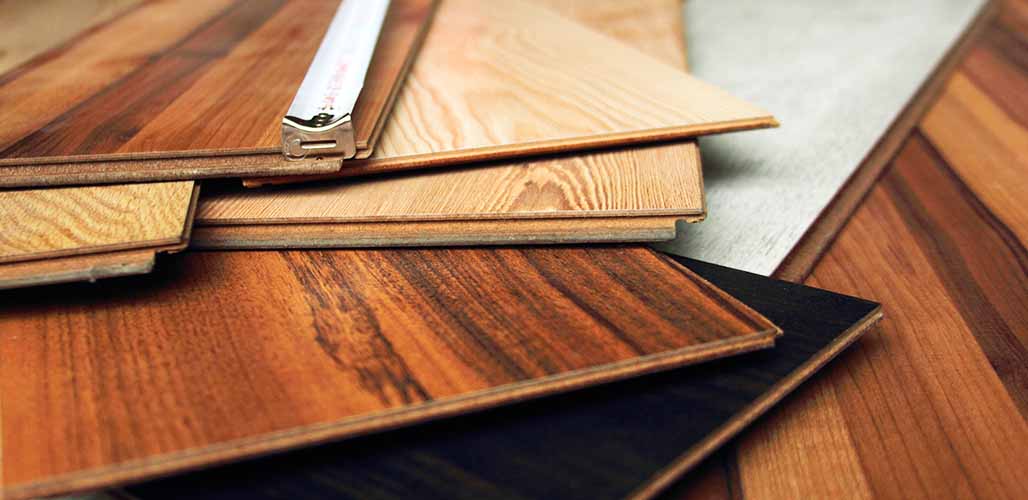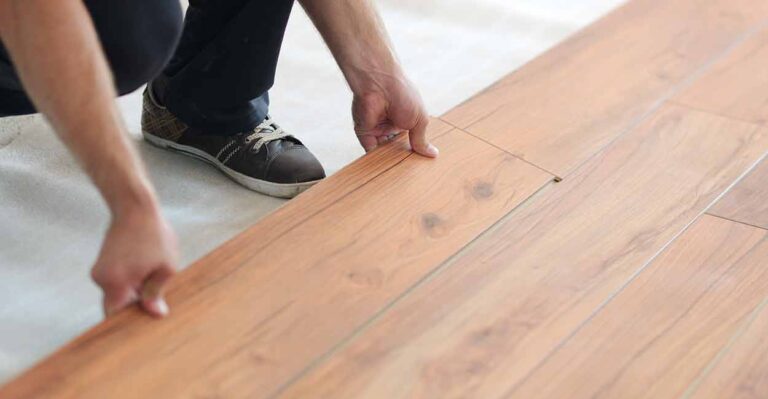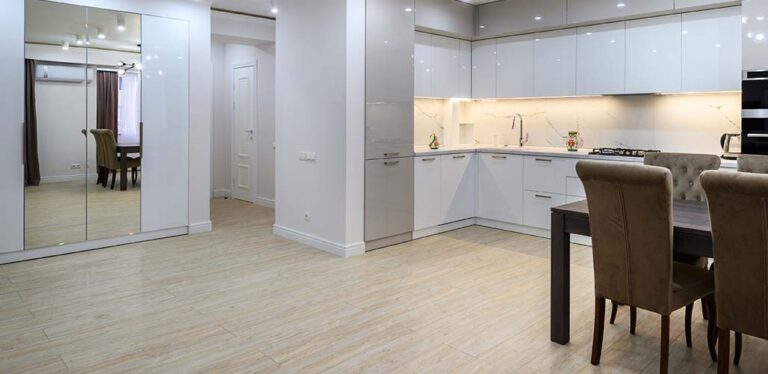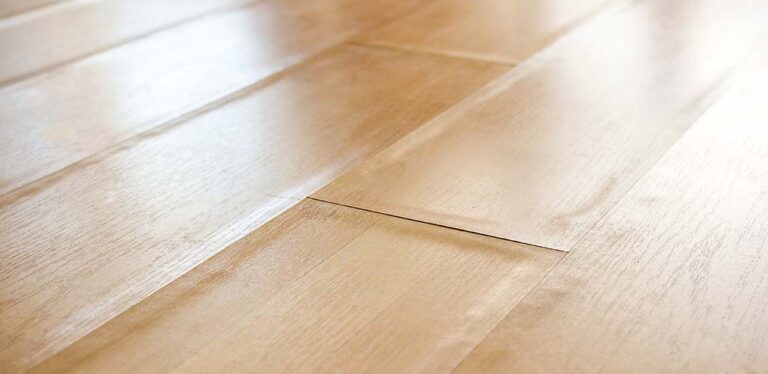Can You Put Laminate Flooring Down Without Underlay?
Can you put laminate flooring down without underlay? Laminate flooring is a durable, cost-effective floor covering that will last several years. To provide a stable floor, underlayment helps the locking mechanism between laminate planks and helps spread the planks uniformly throughout the subfloor. So, I would advise using underlay even if it is not essential for some subfloors. Today, I’ll take a closer look at how underlayment works, why it’s so important, and what happens if you install laminate flooring without underlay.
Contents
- What is underlayment?
- Is laminate flooring underlayment important?
- Can laminate flooring be installed without underlay?
- When you might choose not to use underlay
What is Underlayment?
Underlayment serves three purposes:
- To soak some of the very tiny flaws in the subfloor
- To dampen the sound when stepping on the floor (because it is not connected to the subfloor)
- And to somewhat (very, very little) improve the sensation when walking on the floor.
It’s crucial to realize that carpet padding and underlayment are very different. Unlike carpet padding, laminate or wood flooring won’t feel smoother with a thicker underlayment. But, it will diminish the impact of sub-floor defects and decrease overhead sound in areas below the flooring.
Is Laminate Flooring Underlayment Important?
I cannot express how vital underlayment is! Underlayment and subfloors are undoubtedly the most crucial component of any flooring job in residential and commercial settings. Underlay and subfloor should be chosen and installed correctly for any flooring to be stable and wear well.
Two functions of underlayment are essential for a sound installation of laminate flooring:
- First, underlayment smoothens out any little subfloor irregularities.
- The performance of underlayment is excellent in terms of sound absorption. Avoid adding another underlayment if the laminate flooring planks already have one installed.
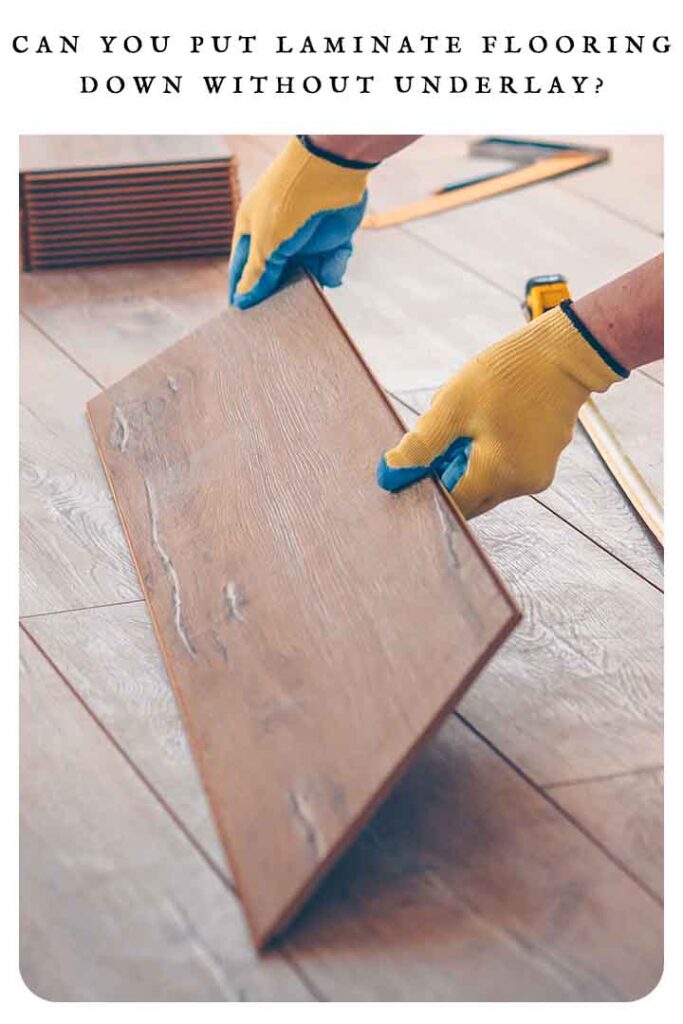
Can Laminate Flooring Be Installed Without Underlayment?
Typically, laminate flooring is put on top of a plastic foam underlayment, which must first be set up on the subfloor. However, this isn’t always essential due to the design of laminate floors. For example, you don’t always need to take the further step of adding foam cushioning if you are placing your floating laminate floor on the bottom level of your house, and there won’t be anyone below to hear the steps. However, a vapor barrier is still necessary to stop humidity from coming up through the flooring.
When to Not Consider Underlayment
You won’t necessarily need underlayment in some circumstances. However, the primary situations where underlayment is more of an extra. Here are four of the main times when you might be able to skip on underlay for laminate flooring:
1. Your Subfloors Are in Good Condition
This is maybe one of the most acceptable reasons for economizing on the underlayment out of anything on the checklist. Although underlayment is helpful for many purposes, sturdiness is its primary use.
Most of our subfloors aren’t perfect unless they are in recent construction or were created with high-quality materials and meticulous attention to detail. The quality of any flooring installed over them and the connectivity between the laminate boards can be negatively impacted by their regular tiny flaws and subtle variances.
That’s awful in and of itself, but the problems will only worsen as the months and years go by. Underlayment prevents them from happening by giving your flooring a flawless, strong foundation free from bumps, rips, and aging wear. However, if you don’t have to worry about these or the other reasons listed after, underlayment might not be necessary for you.
2. There is No Issue with Moisture
The subfloor’s properties will have a significant influence on whether laminate underlayment is necessary or not. But there are also other things to take into account. Among these, moisture is very crucial. Since underlayment enhances the amount of moisture in your subfloors, it is virtually a need for places that are more likely to be damp.
Your laminate flooring can soon get wet, deformed, and mildewed, damaging its overall soundness if an underlayment is not used to create a barrier between these moist subfloors and the surface flooring. Over time, moisture can also weaken the bond between the flooring, which leads the floor to begin warping.
However, not everyone stays in an incredibly humid region. Thus, moisture is unlikely to be a significant issue. Are you one of the fortunate ones that call such a place home? Then to keep your laminate running and appearing at its best, underlayment won’t be that important.
3. You’re Not Bothered by Some Noise
Underlayment is a wise choice for two main reasons: protection against subfloor flaws and dampness. But it also has additional advantages. First, much of the sound you’d anticipate is reduced since it serves as cushioning between the surface and the subfloors.
The solution of underlay is, therefore, perfect for actively expanding families. Without causing any disruption, children and pets can run about, parents can complete all of their chores and work, and visitors can arrive and depart as required.
But not everyone sees sound reduction as a significant benefit. Some people endure it better or have less foot traffic in their homes. Underlayment is unquestionably far less appealing in these situations, which is very reasonable. Although we wouldn’t advise passing on it simply because of this, if you’ve already considered the other things we’ve mentioned, you’re probably better off spending your hard earned money elsewhere.
4. When Budget is a Serious Issue
While we’re talking about money, it would not be very responsible of me to ignore budget impact. As we have openly acknowledged, installing underlayment has several advantages for your flooring job. However, it has a price; even if it is less expensive than flooring, it is still a cost.
Nowadays, you may get laminate flooring with underlayment, but the combined cost may be higher than expected. Some renovators might be prepared and willing to absorb those extra charges, but what if your budget is already rigid? You might forego it or think about a less expensive foam underlayment.
The most satisfactory results are achievable with underlayment, but as with any job, you must have your goals set and continuously keep things in sight as you proceed. However, underlayment is strongly advised even if you don’t meet all four factors mentioned earlier. Failure of laminate flooring can be caused by moisture problems and irregular subfloors, which can cost you a lot more to fix than putting an underlayment.
Can You Put Laminate Flooring Down Without Underlay?
If you’re fortunate enough to live in a dry environment with immaculate subfloors and no requirement for noise reduction, underlayment is fantastic, but it’s not necessary. You may quickly put down your laminate without it if you meet all the ideal circumstances and don’t want to invest more money for additional advantages. You’ll spend less money on materials. While this could be advantageous in the short run, there is an additional danger to the floor’s durability. If you’re like the majority of us, you won’t be in a position to forgo underlayment.

